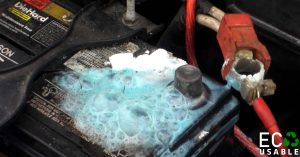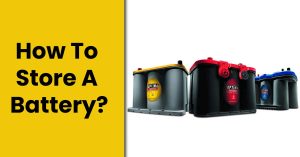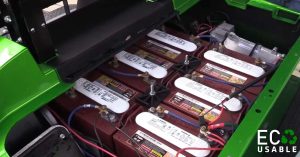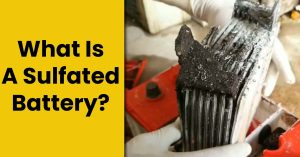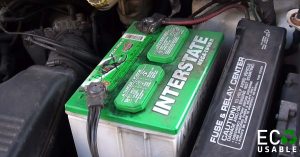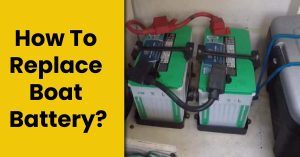What Is A Deep Cycle Battery? – Its Types & Maintenance
In this article, we have explained what is a deep cycle battery, its types, maintenance tips, and how to use it. This guide is for beginners.
Most people are aware of batteries that power their everyday lives and most of the time we think about the batteries when they don’t work.
The main purpose of a battery is to store energy and give it off when needed. There are some significant differences in the working mechanism of different types of batteries and also each battery varies in case of effectiveness.
Choosing a battery type mainly depends on its usage of it, like for what purpose you’re planning to use that particular type of battery.
What Is A Deep Cycle Battery?
Deep cycle lead acid batteries are specially engineered to provide steady power output for a long period with reliability until they reach 80% capacity or more, at which point they need to be recharged again.
They are also known as marathon runners in the world of batteries. In comparison to the other batteries, the deep cycle units provide a lesser amount of power but for a much longer period.
It’s also referred to as a marine battery because these are designed to provide a steady supply of power for an extended period just like one used in marine vehicles.
When To Use A Deep Cycle Battery?
These deep cycle batteries are used in applications where stead and quick starting power is required. Here are some of the most common applications of these units:
- For marine usage. Mostly in fishing boats and Yachts.
- Professional Golf carts.
- Off-grid cabins.
- RV or travel trailers
- Forklift and similar heavy-duty machines.
Types Of Deep Cycle Battery
The deep cycle is functional and applied to both lead-acid and lithium battery technologies. There are different types of deep-cycle batteries available in the market and each differs in reference to its advantages and disadvantages.
Flooded Lead Acid Battery:
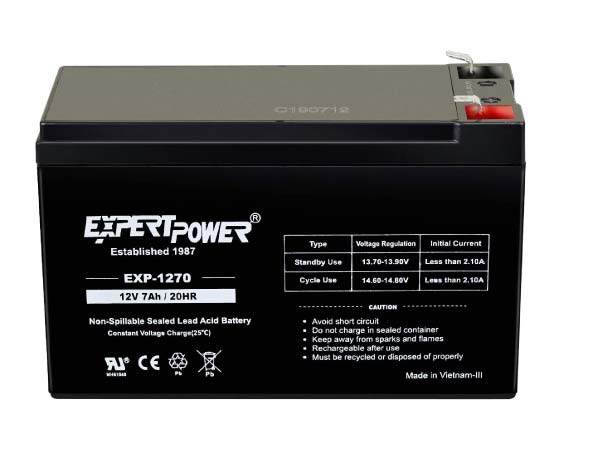
The oldest car battery type in use is a flooded lead-acid battery. In these types of batteries, lead plates are submerged in an electrolyte mixture of water and sulfuric acid.
A chemical reaction takes place during charging and discharging to produce gases that can be vented from the battery.
Almost 30 to 50% is the usable capacity of a flooded lead-acid battery. A flooded battery charges in different stages which is good to leave room for undercharging or overcharging. It has approximately 70 to 85% charging efficiency.
Though a flooded lead-acid battery is highly reliable, affordable, and tolerant of overcharging, it also requires proper ventilation and also requires extra maintenance. While the lifespan is also shorter in these batteries.
Gel Cell:
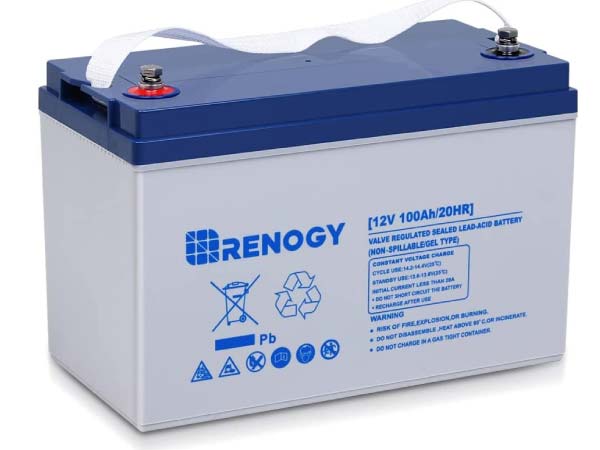
A gel cell battery is one of the VRLA batteries. It uses a gelled electrolyte typically formed from water and sulfuric acid suspended in a silica agent.
The charging efficiency of a gel battery is almost between 85 to 90% with perfect heat tolerance and no off-gassing.
But this battery is intolerant of fast charging as the gelled electrolyte is very sensitive to overcharging. The damage to it is irreparable.
However, it is spill-proof, maintenance-free, and position-insensitive with high tolerance to heat. But it costs more than flooded and AGM batteries and also requires a special regulator and charger.
Absorbent Glass Mat (AGM):
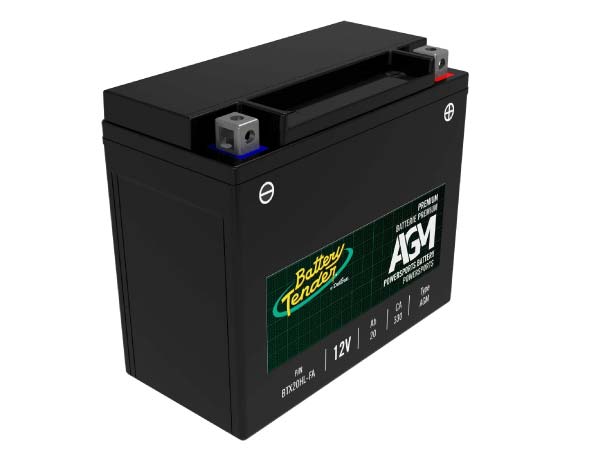
The AGM battery is also a type of VRLA (Valve Regulated Lead Acid) battery. It is a sort of absorbent glass mat that particularly refers to thin fiberglass mats placed between lead plates.
The glass mat is capable of absorbing electrolytes by keeping them from spilling and moving while acting as a damper between the lead plates.
This damper helps to keep the battery safe from shock and vibrations while withstanding cold temperatures. These batteries have low internal resistance and charge way faster than flooded as well as gel cell batteries with a charging efficiency of 95%.
AGM battery has several advantages such as being maintenance-free, durable, fast charging, and position insensitive. However, these are more expensive and highly sensitive to overcharging. That’s why they require a regulated charger.
Lithium-Ion:
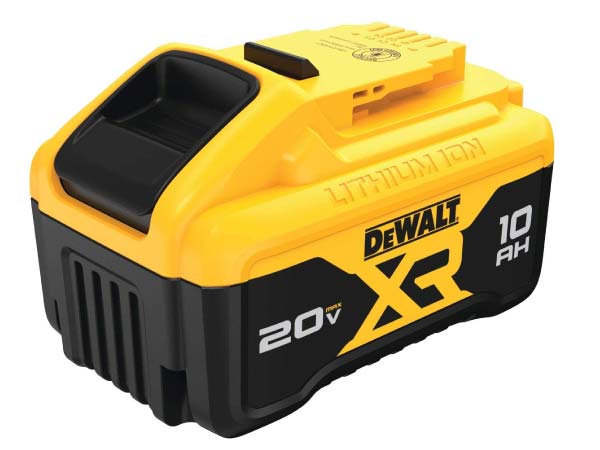
A lithium-ion battery is a relative newcomer as compared to lead-acid battery varieties. These batteries are 30% lighter in comparison to the flooded batteries with a usable capacity of 80 to 100%.
They have the fastest recharging rate as well as an extremely long-life cycle around 2000 to 5000 charge cycles. It also offers constant voltage over any rate of discharge.
The lithium deep cycle batteries are compact, light in weight, maintenance-free, have amazing usable capacity, constant voltage, and the fastest recharging rate. But these are highly expensive and also require a battery maintenance system (BMS).
- Recommended Guide: What are VRLA Batteries?
The Capacity Of Deep Cycle Battery
All deep cycle batteries differ from each other in order of their capacities. But the lithium batteries are capable of providing 100% rated capacity regardless of their rate of discharge.
Lead-acid batteries deliver less usable energy with a higher discharge rate. But in colder weather, both batteries can lose their capacity but these changes are less drastic in the case of lithium batteries.
The capacity of a lead-acid battery reduces up to 50% and the lithium battery faces only a 10% of loss at 0 degrees centigrade.
The Lifespan Of A Deep Cycle Battery
A few factors can influence the lifespan of a deep-cycle battery. A lead-acid battery is more affected by factors as compared to a lithium battery. Proper maintenance such as charging and discharging at a time can help in extending the lifespan of a deep cycle battery.
Overcharging, over-discharging, under-charging, and improper watering greatly impact the life of a lead-acid battery. Though lithium battery doesn’t require watering, so one issue can be eliminated.
Lithium batteries are not affected by partial or under-charging states but they can be damaged severely by over-discharge.
Heat also affects the life of a battery while high temperature degrades the battery much more quicker.
If you want to know more about deep-cycle battery aging, read this research.
Uses Of Deep Cycle Battery
Several items are requiring long-term power output:
Tips For Maintaining A Deep Cycle Battery
- Make sure to clean the battery terminals and cases regularly to prevent dirt and corrosion build-up that could lead to a drop in performance. A mixture of baking soda and water can be used to clean the terminals.
- Overcharging or undercharging a deep-cycle battery can cause damage and shorten its lifespan. Follow the manufacturer’s charging instructions and use a charger designed specifically for deep-cycle batteries.
- Make sure you choose the correct battery for your application. Different types of deep-cycle batteries are designed for different purposes, and using the wrong one could cause it to fail prematurely.
- Deep cycle batteries are designed to handle deep discharges, but frequent deep discharges can cause damage and shorten the battery’s lifespan. Avoid discharging the battery below 50% of its capacity.
- If you’re not going to be using the battery for an extended period, store it in a cool, dry place. Make sure to fully charge the battery before storing it.
- If you’re using a flooded lead-acid battery, check the water levels regularly and top up with distilled water as necessary. Make sure not to overfill the battery.
- Regularly test the battery to ensure it’s holding its charge and performing as expected. A simple voltmeter or hydrometer can be used for this purpose.
- Check out our guide on how to clean the terminals of the battery
Keep it Charged: Keeping the battery charged even when not in use will prevent sulfation and also maintain the battery life. It’s better to charge them even if you’re not using them for a long period.
Monitor Charging Levels: Always start charging at 50% and never let the charge drop under 20%.
FAQs – Frequently Asked Questions
How long do deep-cycle batteries last?
Deep cycle batteries last up to six years for the most part, with proper maintenance and care
In general, their lifespans are:
-Lead-acid and AGM batteries: 6 years
-Gel batteries: 10 years
-Lithium batteries: 3-10 years
Can a deep-cycle battery be solar-charged?
Yes, Any deep-cycle battery can be charged with solar panels. But make sure to use a solar charge controller for deep-cycle solar batteries to regulate the charge.

Alex Black is a seasoned electrical engineer with a remarkable 8-year track record specializing in appliances, generators, and transfer switches. With extensive hands-on experience in the field, Alex possesses a deep understanding of electrical systems and their intricate workings. Throughout their career, Alex has consistently demonstrated expertise in designing, troubleshooting, and maintaining various electrical appliances.

